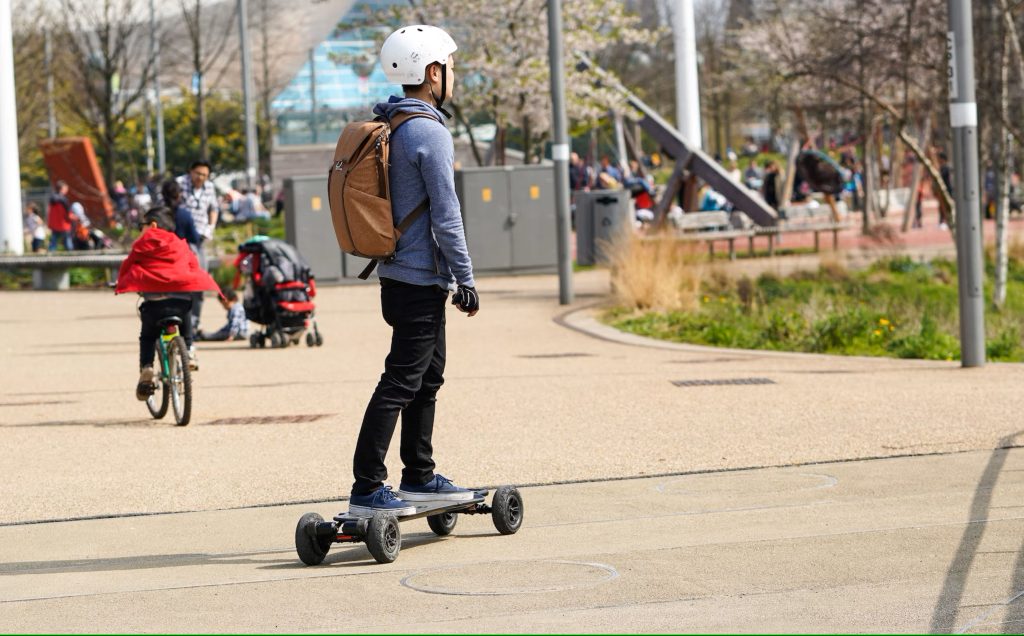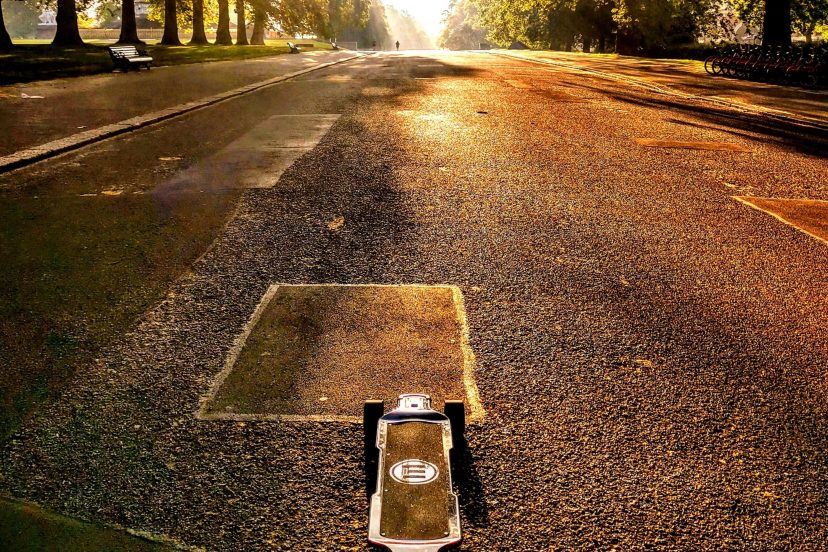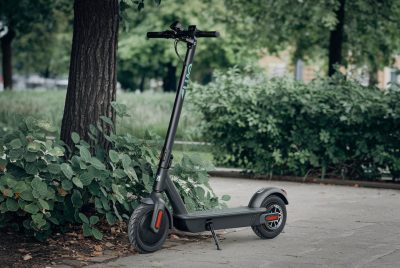The Environmental Impacts Of Electric Skateboards
*We may earn a commission for purchases made using our links. Please see our disclosure to learn more.
As an avid electric skateboard enthusiast, I’ve come to appreciate the thrill and convenience these sleek and electrifying modes of transportation offer. From gliding through city streets with the wind in your hair to effortlessly maneuvering through traffic, electric skateboards have taken the world by storm. However, like any form of modern transportation, they come with their own environmental implications. In this article, we’ll delve into the environmental impacts of electric skateboards and how they can either contribute to or alleviate our planet’s sustainability challenges.
The Electric Skateboard Craze
Electric skateboards have rapidly gained popularity, and it’s not hard to see why. They offer a fun and efficient way to get around, reducing the hassle of traffic congestion and parking woes. But beyond the convenience and excitement, what makes electric skateboards noteworthy is their potential to be a sustainable commuting solution.
The Environmental Impacts Of Electric Skateboards
A Sustainable Commuting Solution
Compared to gas-guzzling cars or even public transportation, electric skateboards are relatively eco-friendly. Their use can significantly reduce our carbon footprint as they operate on electric power, producing zero emissions. Commuters looking for a green alternative to driving or taking the bus find electric skateboards to be an appealing option.

Furthermore, it’s worth highlighting their role in mitigating urban congestion. Traffic congestion not only eats up our time but also contributes to pollution. Electric skateboards, with their compact size and agility, allow riders to weave through traffic, avoiding the stationary frustration of rush-hour gridlock. This not only saves time but also reduces the overall traffic volume and associated emissions.
Energy Efficiency
Electric skateboards are not only fun but also energy-efficient. They consume minimal electricity to cover considerable distances, making them an excellent choice for short to medium commutes. The efficiency stems from the direct transfer of power from the battery to the motor, unlike traditional vehicles that lose energy to heat and mechanical losses.
Let’s put this into perspective. A standard electric skateboard battery can typically travel 10-20 miles on a single charge. This range is sufficient for most urban commuters, covering daily trips to work, school, or errands. To compare, an average car consumes about 2.3 gallons of gasoline to cover the same distance, releasing carbon emissions into the atmosphere. Electric skateboards are indeed a greener alternative for short-distance travel.
Lithium Batteries and Environmental Concerns
However, it’s important to acknowledge that the environmental impact of electric skateboards isn’t completely without concern. Lithium-ion batteries, commonly used in these boards, raise some environmental red flags. The extraction and production of lithium-ion batteries can be detrimental to the environment, impacting ecosystems and consuming large amounts of water.
These batteries also pose disposal challenges. If not recycled properly, they can release toxic chemicals into the environment. It’s crucial for electric skateboard users to be mindful of battery disposal and recycling to minimize these impacts.
To elaborate further, lithium mining is a resource-intensive process that can result in habitat destruction and water pollution. Furthermore, the manufacturing of lithium-ion batteries produces substantial carbon emissions, which is counterintuitive to the electric skateboard‘s overall green image.
On the positive side, many manufacturers are increasingly aware of these concerns and are actively seeking more sustainable alternatives to lithium batteries. Some have started incorporating nickel-metal hydride batteries, which are less harmful to the environment during production and disposal.
Eco-Friendly Skateboard Brands
The good news is that the skateboard industry is not oblivious to these concerns. Many brands are actively seeking to reduce their environmental footprint. They’re using sustainable materials, focusing on recycling programs, and promoting responsible battery disposal. These environmentally conscious companies are making it easier for enthusiasts to choose eco-friendly options.
In fact, some companies go the extra mile to use recycled and reclaimed materials in the construction of their skateboards. For instance, they might use reclaimed wood for decks and incorporate recycled plastics into their enclosures. These efforts help reduce the demand for new materials and limit the environmental impact of skateboard production.
Range and Charging Infrastructure
The practicality of electric skateboards varies depending on where you live and your daily routines. For city dwellers with short commutes, electric skateboards can be a game-changer. They offer a flexible means of transportation without contributing to traffic congestion. However, in areas with limited charging infrastructure, the practicality of electric skateboards may be limited.
The charging infrastructure for electric skateboards is still developing, and it’s most prevalent in urban areas. Many cities have established electric charging stations or provide electricity at public transportation hubs, allowing riders to recharge their boards conveniently. However, rural or less densely populated areas may not have these amenities readily available, which can limit the practicality of electric skateboards for potential users in such regions.
Noise Pollution and Electric Skateboards
One aspect of electric skateboards that often goes unnoticed is the issue of noise pollution. While they are quieter than gas-powered vehicles, they can still produce some noise, especially when traversing rough terrain. It’s important for riders to be considerate of noise levels, especially in residential areas, to minimize disturbances.
Comparatively, electric skateboards are much quieter than traditional internal combustion engine vehicles. The gentle hum of an electric motor is far less intrusive than the revving of a car engine. However, riders should remain mindful of the noise they generate, especially late at night or in noise-sensitive areas. It’s all about finding a balance between enjoying your ride and respecting the peace and tranquility of the community.
The Dilemma of End-of-Life Disposal
As electric skateboard components age and wear out, the question of proper disposal arises. This dilemma extends beyond batteries to other components like motors and electronic controllers. If these parts are not disposed of responsibly, they can end up in landfills, contributing to electronic waste and environmental degradation.
To tackle this issue, some companies have initiated recycling programs. They encourage riders to return their old or damaged electric skateboards, ensuring that the components are properly disposed of or refurbished. Proper disposal and recycling are essential to minimize the environmental impact of these boards.
Regulation and Environmental Responsibility
With the rise in popularity of electric skateboards, there’s a growing need for responsible regulation. This includes speed limits in urban areas, helmet requirements, and guidelines for where and how electric skateboards can be ridden. Adhering to these regulations is not only for safety but also for environmental responsibility.
To put it in perspective, consider speed limits. Electric skateboards can reach impressive speeds, and while this can be thrilling, it also poses safety risks to both riders and pedestrians. Responsible speed limits help ensure the safety of all road users while also reducing the risk of accidents and their associated environmental costs.
Challenges and Concerns
Electric skateboards, while offering many advantages, have their limitations, especially when it comes to range and battery life. These constraints are vital for users to understand.
One primary concern is the range, which dictates how far a skateboard can travel on a single charge. This means riders must plan routes carefully and consider charging stops, particularly on longer trips. Additionally, battery life decreases over time, reducing the skateboard’s range. Battery replacement can be costly, and proper disposal is crucial to minimize environmental impact.
To maximize the environmental impacts of electric skateboards, users should adopt eco-conscious habits. Avoiding excessive acceleration and braking, as well as being proactive about battery disposal, can help electric skateboard enthusiasts enjoy the ride while minimizing their environmental footprint.
Conclusion
In conclusion, the environmental impacts of electric skateboards are a double-edged. On one hand, they offer a sustainable and efficient mode of transportation that can significantly reduce our carbon footprint. On the other hand, the production and disposal of lithium-ion batteries pose environmental challenges.
As electric skateboard enthusiasts, it’s our responsibility to promote sustainable choices, support eco-friendly brands, and be mindful of our battery disposal practices. Electric skateboards can be a green solution for urban commuting if we take the necessary steps to mitigate their environmental impact.
Electric skateboards are not a perfect solution, but they’re a step in the right direction. Their potential to reduce carbon emissions and traffic congestion, coupled with the growing awareness of their environmental impact, offers hope for a more sustainable future.
Frequently Asked Questions (FAQs)
Q1: Are electric skateboards really eco-friendly?
Electric skateboards can be eco-friendly compared to gas-powered vehicles, but the sustainability of an electric skateboard largely depends on factors like battery production, disposal, and the rider’s environmental responsibility.
Q2: What should I look for in an eco-friendly electric skateboard brand?
Look for brands that prioritize sustainability by using recycled materials, offering recycling programs, and promoting responsible battery disposal.
Q3: Can electric skateboards help reduce traffic congestion?
Yes, electric skateboards can help reduce traffic congestion in urban areas by providing a quick and efficient alternative mode of transportation.
Q4: What’s the typical range of an electric skateboard?
The range of an electric skateboard varies by brand and model, but many can cover distances between 10 to 20 miles on a single charge.
Q5: Are there any noise regulations for electric skateboards?
Noise regulations for electric skateboards may vary by location. It’s important to be considerate of noise levels, especially in residential areas, and follow any local noise ordinances.




